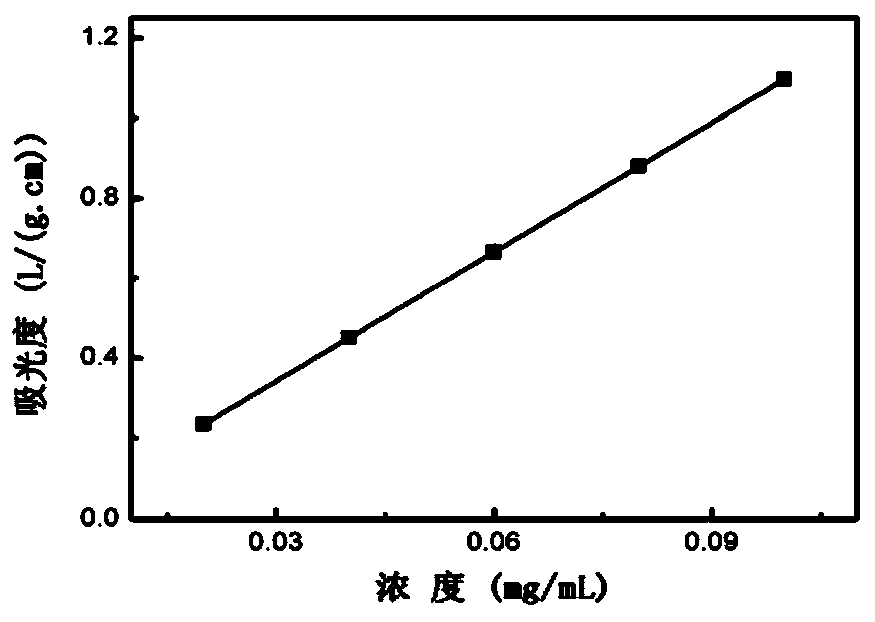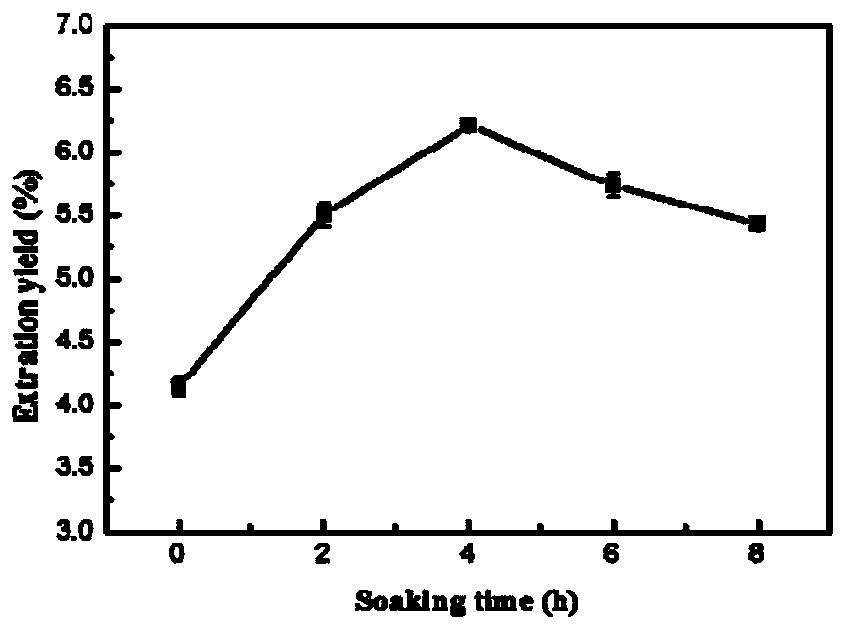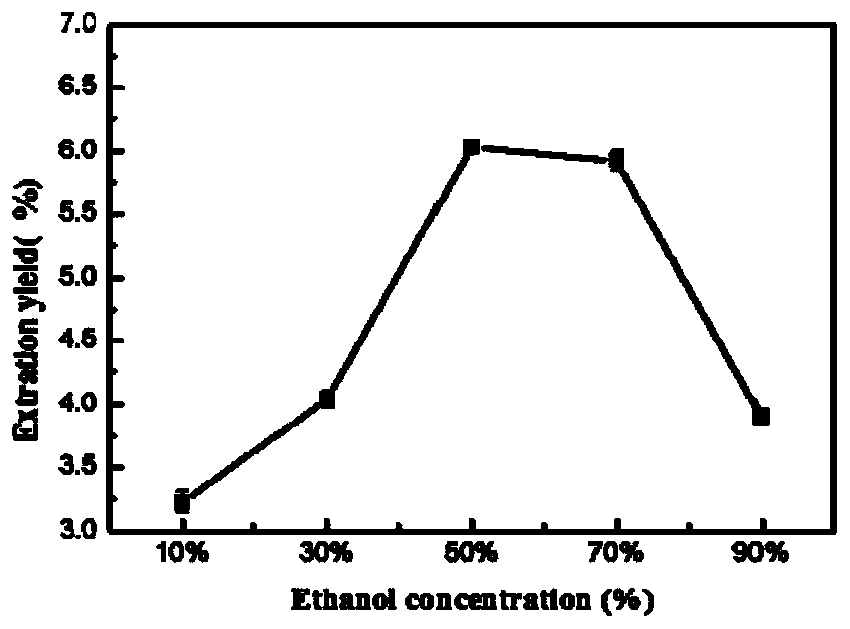Method for extracting flavonoid compounds from lamiophlomis rotata by response surface method
A response surface methodology, a unique technology, applied in pharmaceutical formulations, plant raw materials, design optimization/simulation, etc., which can solve the problem of low extraction rate of total flavonoids in the unique flavor, low extraction rate, and inability to clearly find the response value and independent variable function. Expressions etc.
- Summary
- Abstract
- Description
- Claims
- Application Information
AI Technical Summary
Problems solved by technology
Method used
Image
Examples
preparation example Construction
[0060] The preparation method of the rutin absorbance standard curve is as follows: take 50.0 mg rutin standard substance, dilute it to a 250mL volumetric flask with ethanol with a volume fraction of 70%, and prepare a rutin standard substance mother solution with a concentration of 0.2mg / mL. Then accurately measure 2.5, 5.0, 7.5, 10.0, 12.5mL rutin standard mother solution respectively and place them in a 25mL volumetric flask, and take 3 parallel concentrations for each gradient; use NaNO 2 -Al(NO 3 ) 3 Make a standard curve by the colorimetric method, add 0.3mL 5% NaNO to the 25mL volumetric product containing different amounts of rutin standard mother solution respectively 2 , shake well, let stand for 10min; add 0.3mL 10% Al(NO 3 ) 3 , shake well, let stand for 10min; then add 4mL 4% NaOH, shake well, dilute to 25mL with 70% ethanol, mix well, let stand for 15min. 70% ethanol was used as the blank control group. At 505nm, measure the absorbance value, and measure the...
Embodiment 1
[0070] Pulverize the Duyiwei medicinal material and pass through a 40-mesh sieve to obtain the Duyiwei powder. Weigh 2.0g of the pretreated Duyiwei powder, fix the ethanol volume fraction to 50%, ultrasonic power to 240W, extraction time to 20min, and a solid-to-liquid ratio of 1 : 20g / mL, taking soaking time 0, 2, 4, 6, 8h as experimental points respectively, investigates the influence of different soaking times on the extraction rate of total flavonoids of Duyi. Such as figure 2 As shown, with the increase of soaking time, the extraction rate of total flavonoids increased continuously. When the soaking time increased from 0h to 4h, the extraction rate of total flavonoids increased significantly, but the extraction rate decreased after 4h. Therefore, choose 4 hours as the best soaking time.
Embodiment 2
[0072] Pulverize the Duyiwei medicinal material and pass through a 40-mesh sieve to obtain the Duyiwei powder. Weigh 2.0g of the pretreated Duyiwei powder, fix the soaking time for 4h, ultrasonic power is 240W, extraction time is 20min, and the solid-liquid ratio is 1:20g / mL, taking the volume fraction of ethanol as 10%, 30%, 50%, 70%, and 90% as experimental points respectively, to investigate the influence of different volume fractions of ethanol on the extraction rate of total flavonoids of unifoliate, as image 3 As shown, with the increase of ethanol volume fraction, the extraction rate of flavonoids of Duyiwei first increased and then decreased. There is a decline. However, when the volume fraction of ethanol exceeds 70%, the extraction yield drops rapidly.
PUM
 Login to View More
Login to View More Abstract
Description
Claims
Application Information
 Login to View More
Login to View More - R&D
- Intellectual Property
- Life Sciences
- Materials
- Tech Scout
- Unparalleled Data Quality
- Higher Quality Content
- 60% Fewer Hallucinations
Browse by: Latest US Patents, China's latest patents, Technical Efficacy Thesaurus, Application Domain, Technology Topic, Popular Technical Reports.
© 2025 PatSnap. All rights reserved.Legal|Privacy policy|Modern Slavery Act Transparency Statement|Sitemap|About US| Contact US: help@patsnap.com



